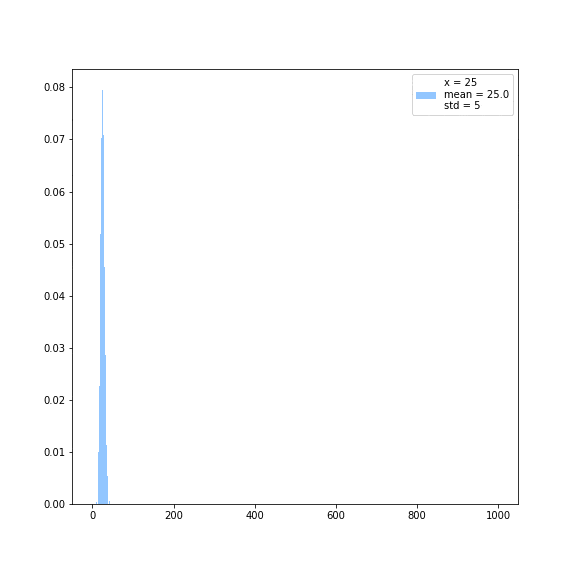Distribution of weight of each term in the exponential function.
2019
Type : blog
Consider the exponential function
it is evident that if you evaluate at two arbitrary real numbers that larger order terms in the taylor expansion are more important when you evaluate the the bigger term compared with the smaller term , but how exactly does the weight of the importance shift with different values of ? I wanted to answer this question so I made this little gif, and the answer is surprisingly elegent: the dominant term of the taylor expansion is is , and the distrubution looks pretty poissonian! You can certainly see a trend, where the standard deviation which I very crudly approximated looks like it's tending towards the square root of the number at which the series is being evaluated :).

Denali says: This makes sense because if you fix , then consider the ratio of the n plus one'th term and the n minus one'th term.
the th term onle becomes more important than the th term when
You can find the above gif here, also if you'd like to see the source code it's in the same file in that repository.
